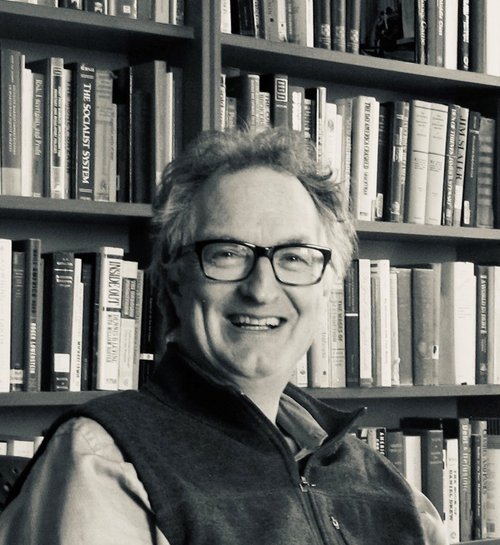The corona bubble: are we overreacting?
Our response to the coronavirus pandemic resembles the inverse of a speculative mania, says Edward Chancellor.

The language commonly used to describe speculative manias is borrowed from epidemiology. A new technology sparks a “contagion”, investors are “infected” with greed and speculative “fever” breaks out. Today, the world is faced with another epidemic. Our response to the coronavirus pandemic resembles the inverse of a speculative mania, with fear replacing greed, and errors of pessimism potentially replacing those of optimism.
In his new book, The Rules of Contagion, Adam Kurcharski observes that bubbles and diseases have similar growth phases. Both see periods of exponential growth. Eventually the spread peaks, the bubble bursts and the number of infections falls sharply. A typical outbreak chart resembles an inverted “V”; bubbles follow a similar trajectory. Financial bubbles and epidemics are both prone to cross national borders. Bubbles are a form of social contagion. When markets are soaring, “fear of missing out” rules. Investors lose the capacity to make reasoned judgments. Herd behaviour and groupthink prevail. Bullish narratives proliferate.
The coronavirus panic has a familiar ring. Friends and contacts have taken to forwarding articles by an alarmist Covid-19 commentator (not a professional epidemiologist) who claims that his article is the only thing you’ll ever need to read and will save lives. It’s impossible to say whether this advice is sound or not. But it certainly feels like the pandemic mirror image to the Wall Street pied pipers who loudly played their tunes during the internet bubble.
MoneyWeek
Subscribe to MoneyWeek today and get your first six magazine issues absolutely FREE

Sign up to Money Morning
Don't miss the latest investment and personal finances news, market analysis, plus money-saving tips with our free twice-daily newsletter
Don't miss the latest investment and personal finances news, market analysis, plus money-saving tips with our free twice-daily newsletter
Trust the experts, we are told: follow the data and science. If only it were that simple. During the internet and real-estate bubbles, financial experts were wrong. A top hedge-fund manager once complained to me that “every bubble has an academic shill”. Epidemiology, like finance, is as much an art as science. A colleague and I once gathered data on every bubble we could find. Each one turned out to be different. Epidemiologists face the same problem – as they like to joke, “if you’ve seen one pandemic, you’ve seen… one pandemic”.
Both investors and epidemiologists face chronic uncertainty. During an epidemic, the data is always changing. Differences in climate and social behaviour affect the spread of disease across geographies. This poses huge challenges when trying to model a pandemic. Epidemiologists, like investment strategists, are prone to egregious forecasting errors. In September 2014, the Centers for Disease Control and Prevention forecast 1.4 million cases of Ebola in West Africa by the following January. In the end, this epidemic produced fewer than 30,000 reported cases.
The true infection rate of Covid-19 is unknown, as outside of South Korea testing has been inadequate and no antibody test is yet available. China can’t be trusted to provide accurate data. As for the fatality rate, Italians are recording deaths due to Covid-19 when other conditions may be prevalent. Last week Imperial College predicted more than two million would die in the US and half a million in the UK if Covid-19 was not suppressed. These forecasts persuaded the US and UK governments to take drastic action.
Yet the assumptions in Imperial’s model – the reproduction rate, fatality rate, etc. – are at best educated guesses. Even Imperial admits what it calls “conservative” assumptions are pessimistic. Such pessimism, or call it excessive caution, appears to be the institutional bias of epidemiologists, just as finance types are prone to hyper-optimism.
A few dissenting voices can be heard. Stanford University epidemiologist John Ioannidis claims that analysis of the outbreak on the Diamond Princess cruise ship suggests the virus is much less of a danger to life than commonly assumed. Also drawing on the cruise experience, Michael Levitt, the Stanford biophysicist and Nobel laureate, makes a similar point. “What we need to control is the panic...,” Levitt told the Los Angeles Times, “we’re going to be fine.”
This calls to mind Franklin D. Roosevelt’s words to the American people in his address at the depth of the Great Depression in 1933: “the only thing we have to fear is… fear itself – nameless, unreasoning, unjustified terror which paralyses needed efforts to convert retreat into advance”. When the history of this pandemic is written, it may become a postscript to the ever-expanding volume, Extraordinary Popular Delusions and the Madness of Crowds first published in 1841.
Get the latest financial news, insights and expert analysis from our award-winning MoneyWeek team, to help you understand what really matters when it comes to your finances.
Edward specialises in business and finance and he regularly contributes to the MoneyWeek regarding the global economy during the pre, during and post-pandemic, plus he reports on the global stock market on occasion.
Edward has written for many reputable publications such as The New York Times, Financial Times, The Wall Street Journal, Yahoo, The Spectator and he is currently a columnist for Reuters Breakingviews. He is also a financial historian and investment strategist with a first-class honours degree from Trinity College, Cambridge.
Edward received a George Polk Award in 2008 for financial reporting for his article “Ponzi Nation” in Institutional Investor magazine. He is also a book writer, his latest book being The Price of Time, which was longlisted for the FT 2022 Business Book of the Year.
-
 ‘Why I have ditched my Help to Buy ISA for cash savings and the stock market’
‘Why I have ditched my Help to Buy ISA for cash savings and the stock market’Without the 25% bonus, my Help to Buy ISA is effectively redundant, says MoneyWeek writer Sam Walker.
-
 Is your inheritance tax allowance cut if you sell to downsize or sell your home to pay for care?
Is your inheritance tax allowance cut if you sell to downsize or sell your home to pay for care?Downsizing relief is a little-known benefit that could save your loved ones tens of thousands of pounds in inheritance tax after you’ve died.
-
 UK wages grow at a record pace
UK wages grow at a record paceThe latest UK wages data will add pressure on the BoE to push interest rates even higher.
-
 Trapped in a time of zombie government
Trapped in a time of zombie governmentIt’s not just companies that are eking out an existence, says Max King. The state is in the twilight zone too.
-
 America is in deep denial over debt
America is in deep denial over debtThe downgrade in America’s credit rating was much criticised by the US government, says Alex Rankine. But was it a long time coming?
-
 UK economy avoids stagnation with surprise growth
UK economy avoids stagnation with surprise growthGross domestic product increased by 0.2% in the second quarter and by 0.5% in June
-
 Bank of England raises interest rates to 5.25%
Bank of England raises interest rates to 5.25%The Bank has hiked rates from 5% to 5.25%, marking the 14th increase in a row. We explain what it means for savers and homeowners - and whether more rate rises are on the horizon
-
 UK inflation remains at 8.7% ‒ what it means for your money
UK inflation remains at 8.7% ‒ what it means for your moneyInflation was unmoved at 8.7% in the 12 months to May. What does this ‘sticky’ rate of inflation mean for your money?
-
 Would a food price cap actually work?
Would a food price cap actually work?Analysis The government is discussing plans to cap the prices of essentials. But could this intervention do more harm than good?
-
 Is my pay keeping up with inflation?
Is my pay keeping up with inflation?Analysis High inflation means take home pay is being eroded in real terms. An online calculator reveals the pay rise you need to match the rising cost of living - and how much worse off you are without it.
